|
It is quite rare to find nowadays WW1 helmets on the former battlefields, but you can find some very easily on the flee markets. Quite logical, since those pieces were considered as a trophy by the fighters. There must be therefore a lot of them in the cellars.
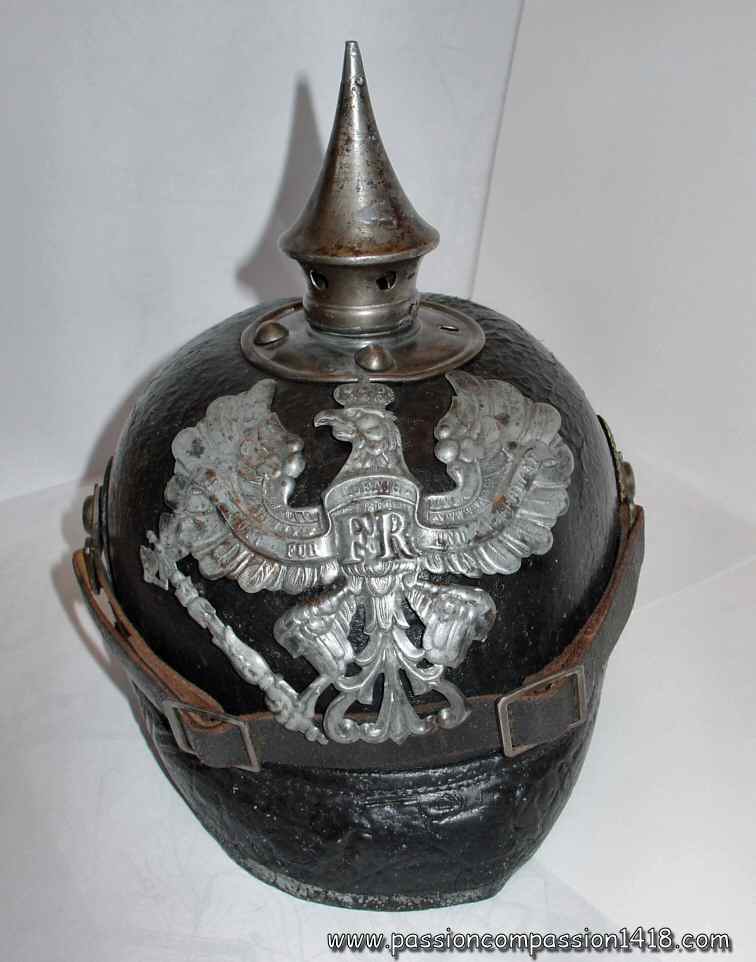 Germans went to war with those famous pick helmets (Pickelhaube), made of boiled leather, and French armies with tissue hats...
Germans went to war with those famous pick helmets (Pickelhaube), made of boiled leather, and French armies with tissue hats...
The German Pickelhaube only can constitute a huge collection, since every kingdom of the IInd Reich had its own helmet type.
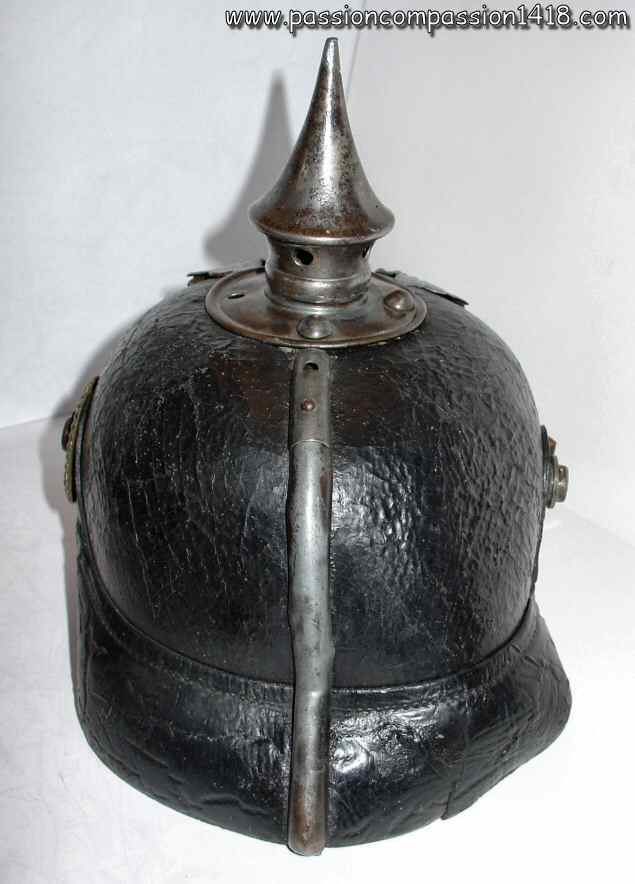
A wonderful collection of Pickelhaubes can be visited in the Fort de la Pompelle, near Rheims. That place is also a very nice museum located in a famous fighting place, inside a fortress heavily shelled during the war.
Needless to mention that with such helmets or hats, a hit on the head was very often lethal ! The fight experience induced the French decision in 1915 to use hemispherical steel hats placed under the tissue hat of their infantrymen...
In 1995, I was lucky enough to notice in the traces of a forest machine, on the top of hill 304 near Verdun, the remainings of a destroyed German Pickelhaube. 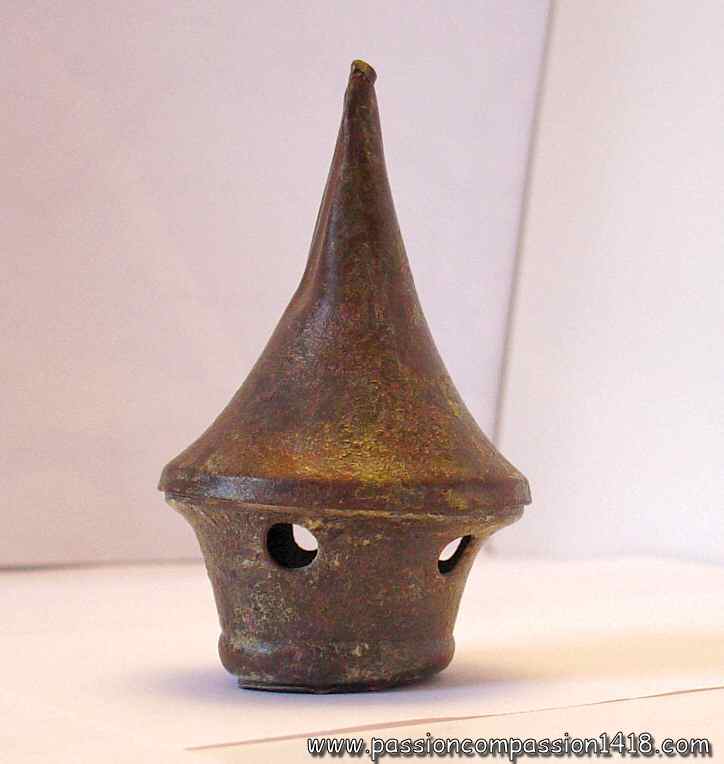
The frontal symbol was not present, but the brass edges, traces of leather, and the Pick itself were noticeable. I cleaned that latter, and made of it the symbol of my collection !
Those helmets, invented by the officer Adrian were distributed to the French troops just before the september 25th 1915 offensive. 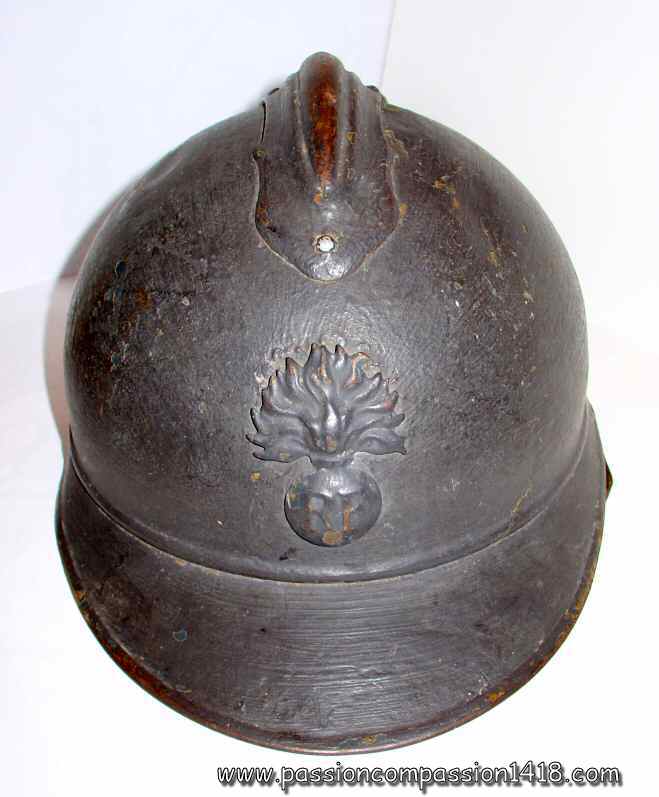
Yhey probably saved many lifes, even if their thin steel plate making was giving a relatively poor protection. Anyway, that helmet was adopted by all the French arms, and distributed to their Belgian, Italian and Serbian allies.
Only at some meters from the above mentionned remainings of the German Pickhube on hill 305 near Verdun, you could notice in 1995 that part of a French Adrian helmet.
First real heavy helemt of the modern times, the German Stahlhelm was distributed to the IInd Reich troops in 1916. Pressed in a better steel plate than its French competitor, and covering a larger portion of the head, it offered a better protection. The two rivets (that will disappear in the later versions used by the soldiers of the IIrd Reich) on the side of the helmet used as a fixing point for camouflage or additional protection steel plate.
The soldiers of the engaged armies were harassed by the weight of their reglementary equipment. Temptation was very high for most of them to get rid with some of these objects. But most of the time, the equipement pieces that can be found nowadays on the battlefields were belonging to dead soldiers, torned and buried by the shelling.
Thirst was one of the worst ennemies of the frontline fighters. Gourds were therefore indispensable objects, and you can find them in quantities around the ancient trenches nowadays.
The French gourd had a very characteristic design, with its two necks : the narrower for drinking, the larger for pouring or filling.
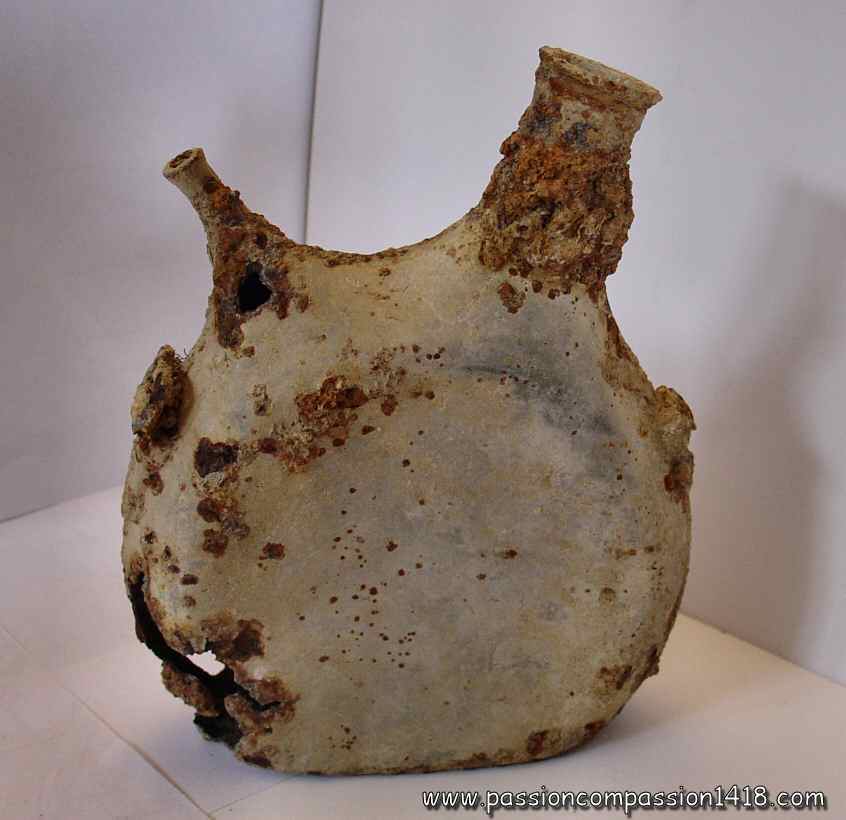 |
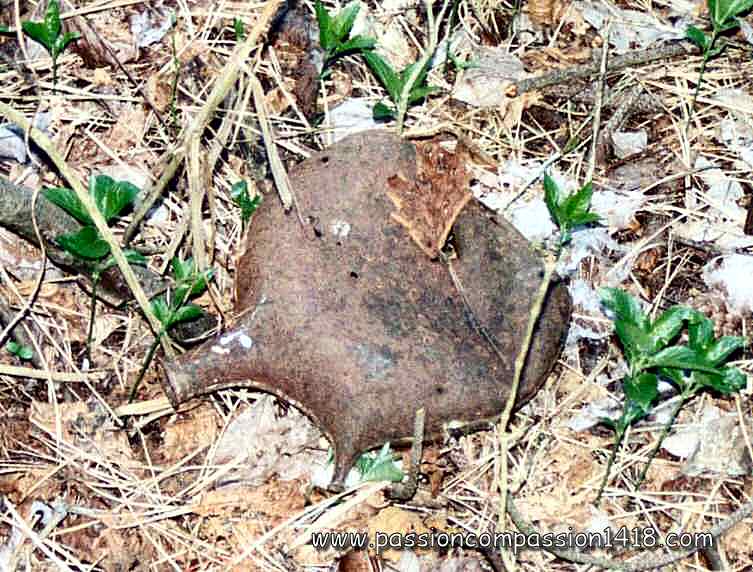 |
The German gourd had a more classical shape. We must believe that its cap was very efficient since the model hereunder at the right side was still containing a red-brown liquid that I could not identify.
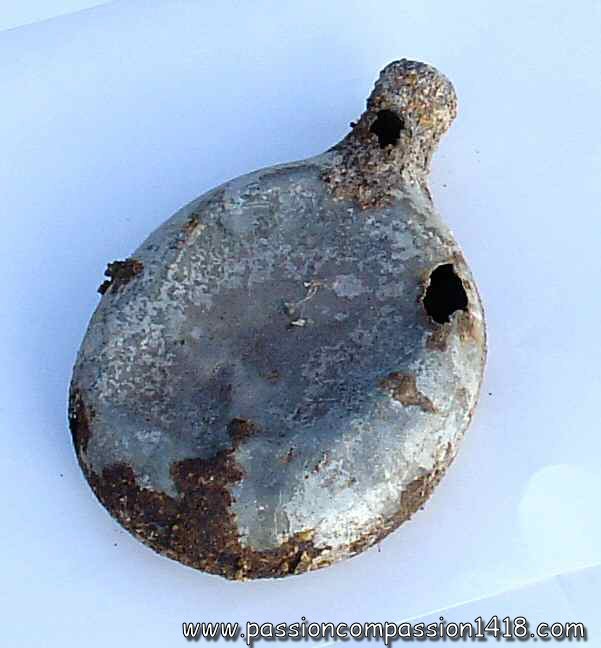 |
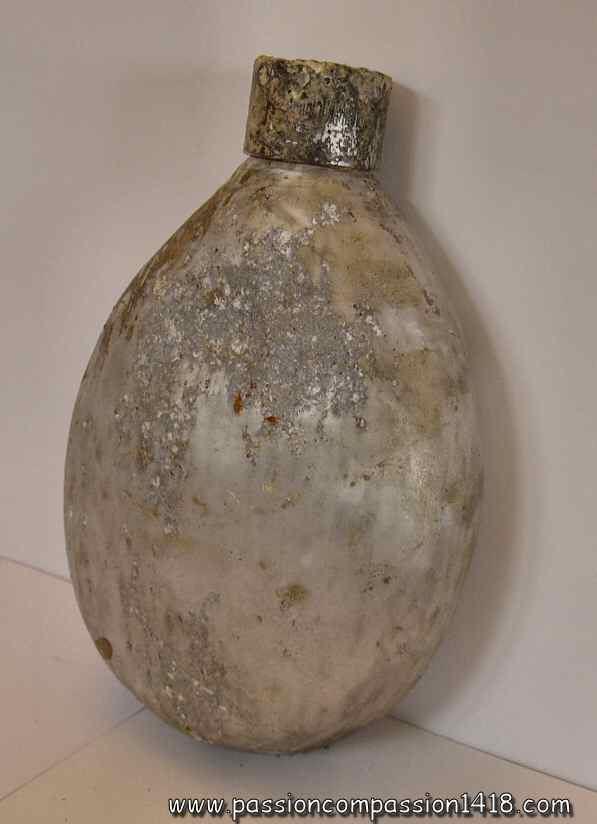 |
The French army gave to the reglementary package of the soldiers a very civilian cup... The German used a mess-tin whose design was very modern.
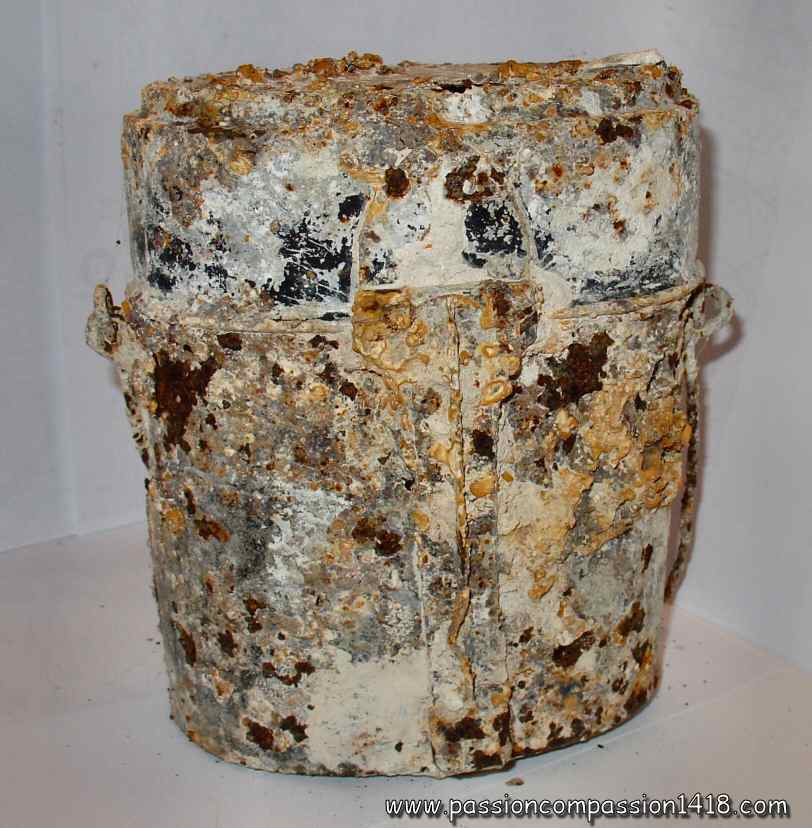 |
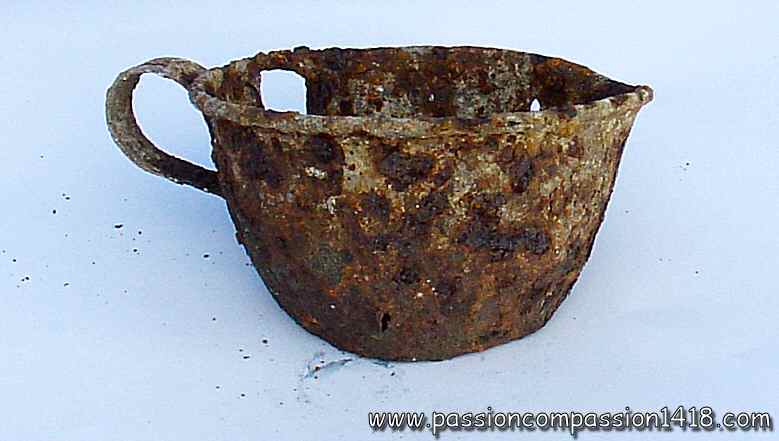 |
Again, while the French soldiers received classical forks and spoons, the German Army designed specific and very handy material. The same design is still in use nowadays by the tourists !
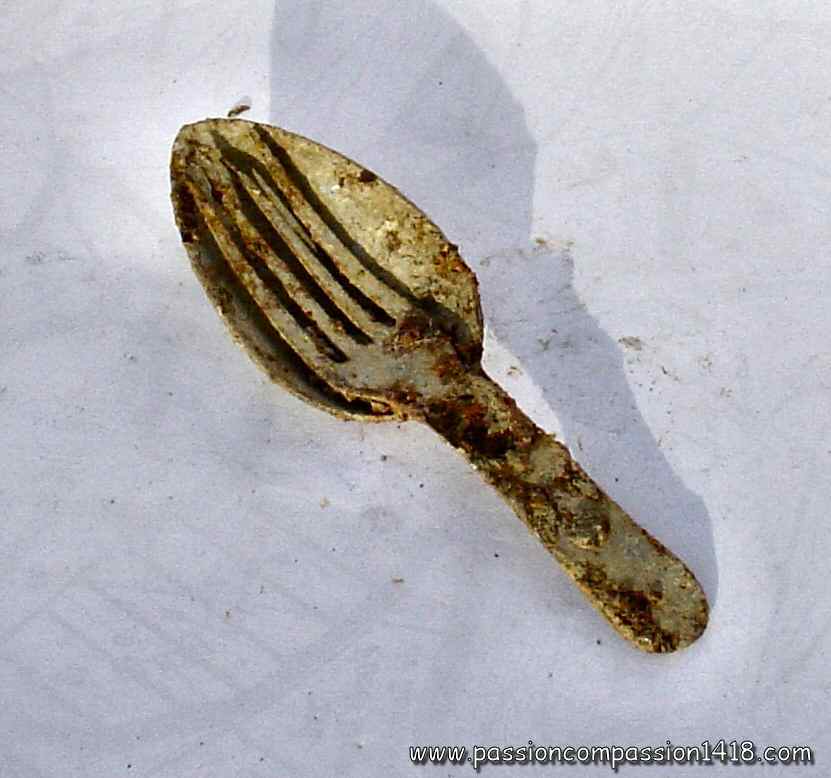 |
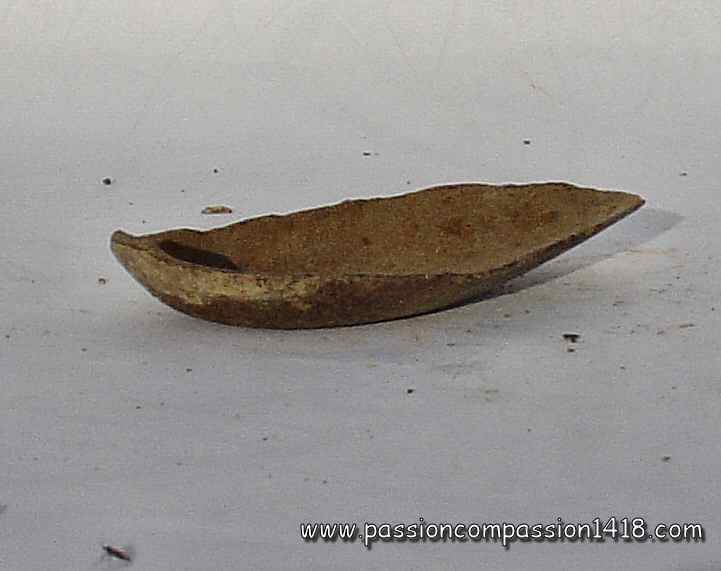 |
The soles, shoes, gaiters or parts of belts, in leather, generally resisted well to the time agression, and it is not rare to find some nowadays.
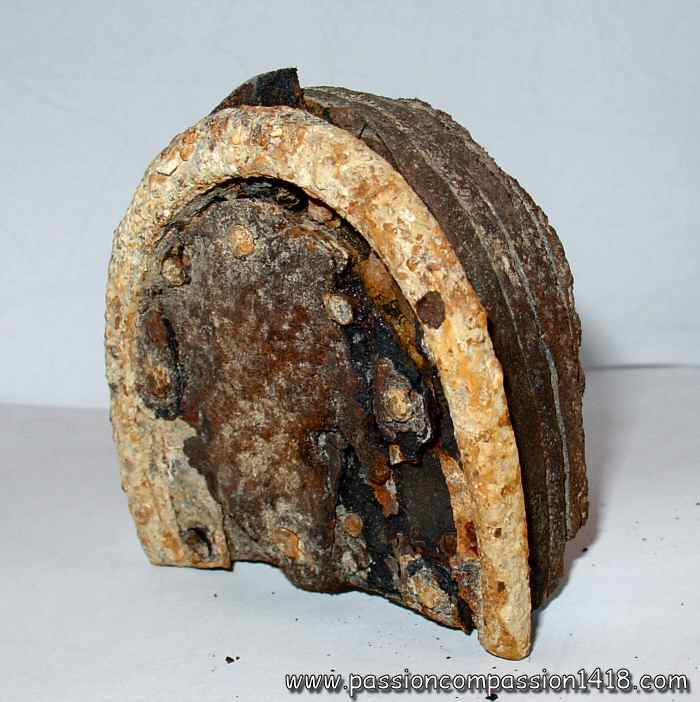 |
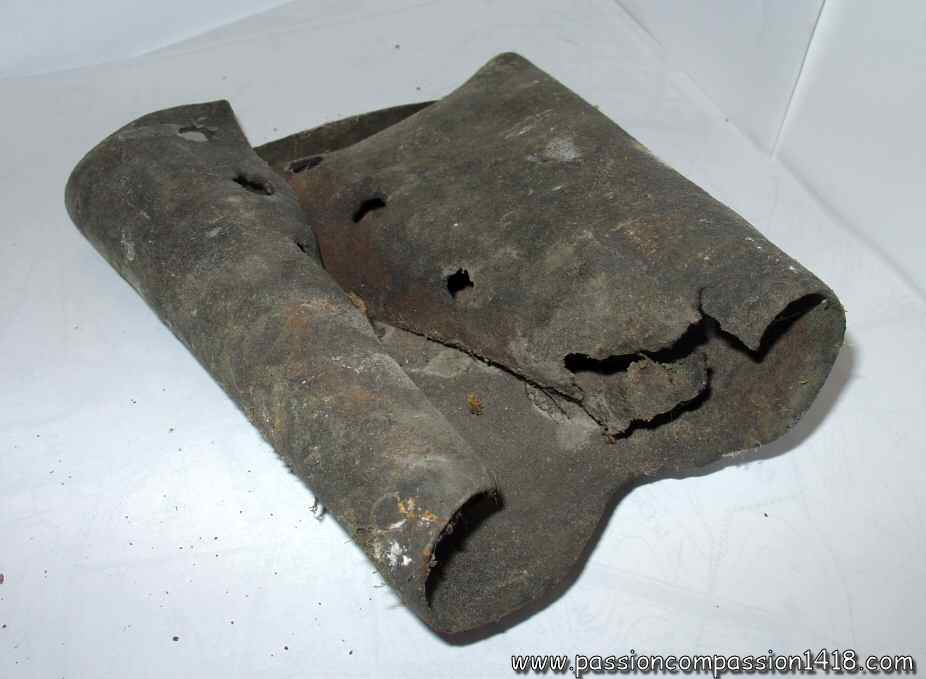 |
Tons of various materials, bring by the soldiers, were spread on the front zone. This dump ground, amongst what the fighting men were living, is still visible on the former battlefields, and the pieces that can be found are somtimes really touching..
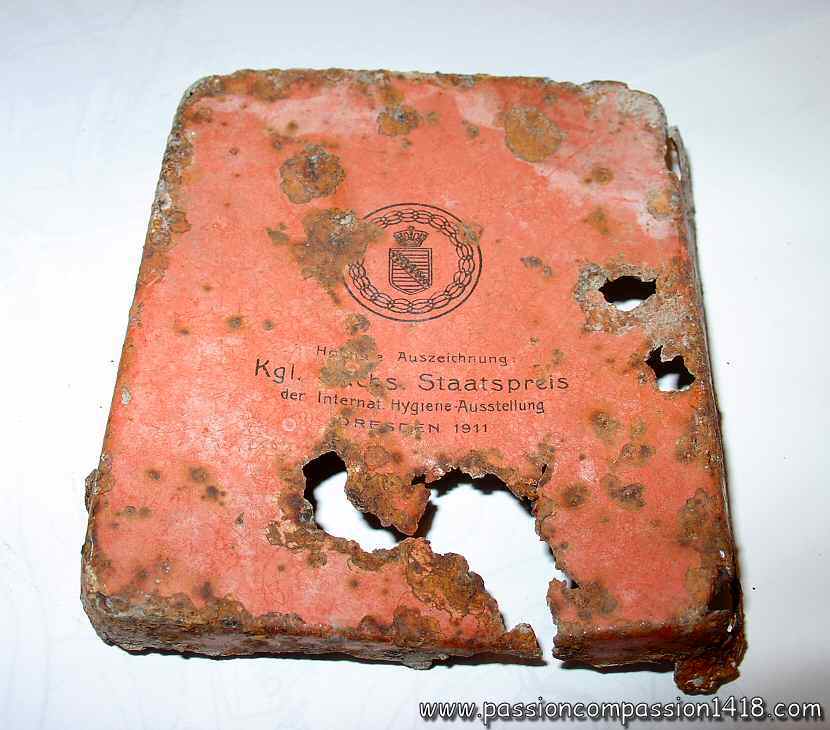 |
||
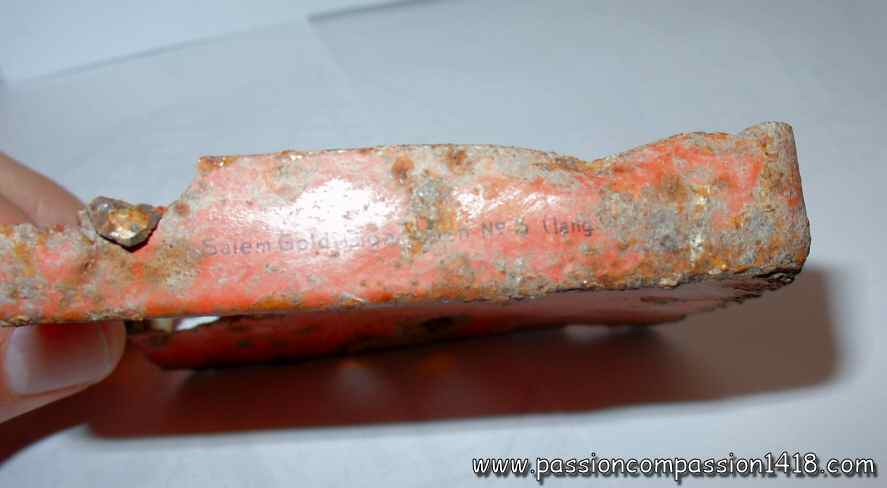 |
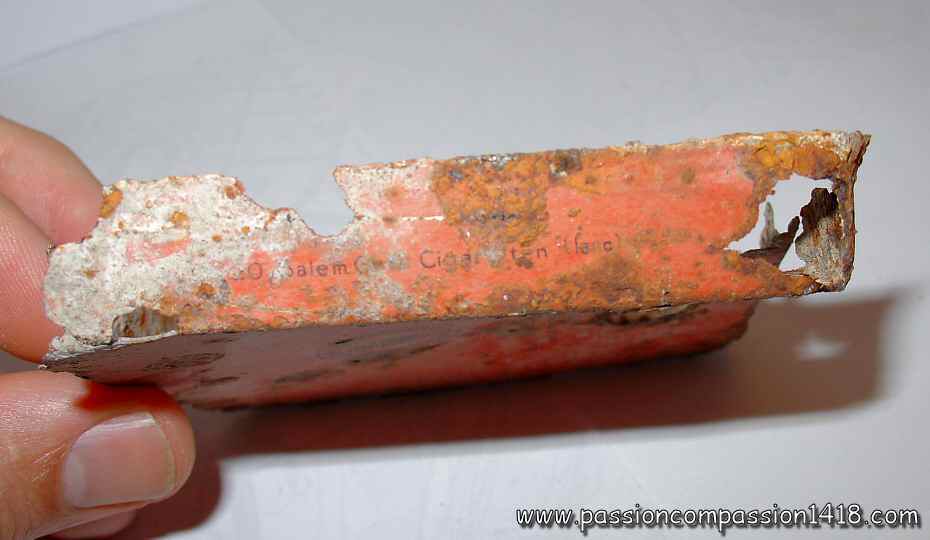 |
|
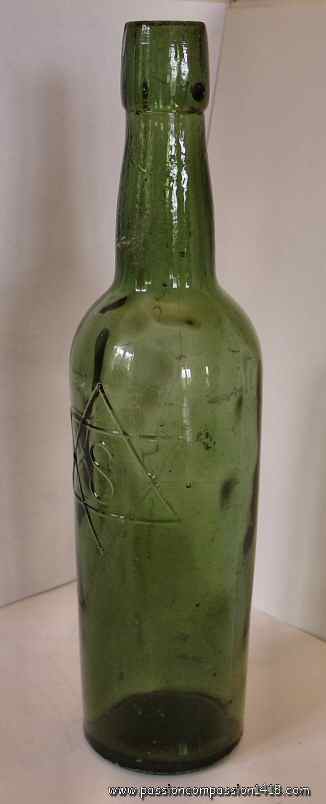 What are the different ways to kill time in the mud of the trnches, when you are a young man, when you are thirsty, afraid, cold ? Alcohol is generously distributed by the armies, but also bought by the soldiers themselves with their own money. In some parts of the old frontline, big amounts of old wine or beer bottles can still be found.
What are the different ways to kill time in the mud of the trnches, when you are a young man, when you are thirsty, afraid, cold ? Alcohol is generously distributed by the armies, but also bought by the soldiers themselves with their own money. In some parts of the old frontline, big amounts of old wine or beer bottles can still be found.
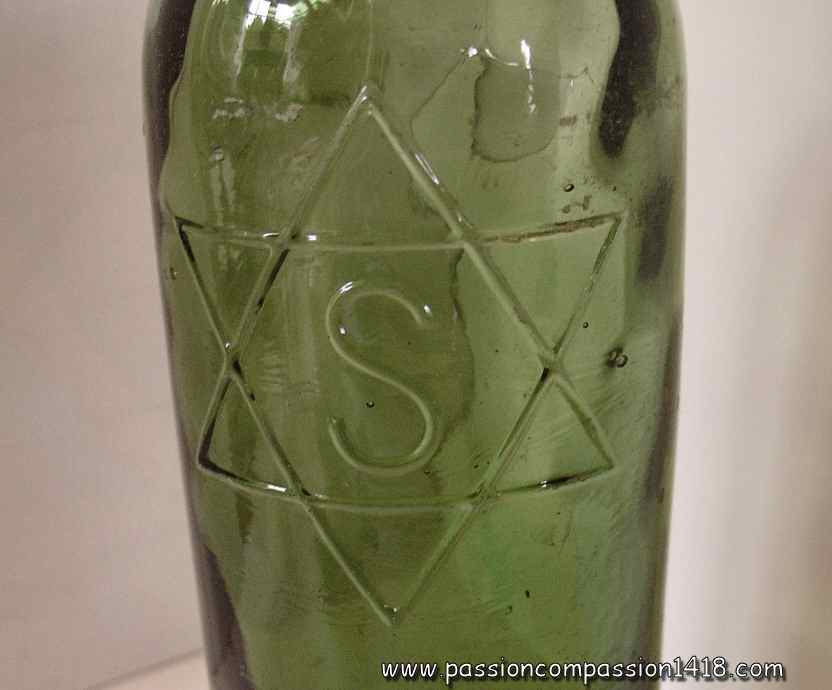 The bottle at the left has the particualrity of beeing decorated with a Salomon's star. I thought this was related to a Jewish beermaking company, but it appears that the 6 branches star was the symbol of the beermakers in Germany (thank you to all you people who sent me details about that). Anyway, this reminds us that during WW1, Aryan Germans and Jewish Germans were fighting together in the same trenches...
The bottle at the left has the particualrity of beeing decorated with a Salomon's star. I thought this was related to a Jewish beermaking company, but it appears that the 6 branches star was the symbol of the beermakers in Germany (thank you to all you people who sent me details about that). Anyway, this reminds us that during WW1, Aryan Germans and Jewish Germans were fighting together in the same trenches...
The IIIrd Reich will take care, some years later, to break that friendship !
But if the Army is distributing alcohol so easily, it is also to 'help' the soldiers to go 'over the top', at the assault time. Big quantities of small bottles of mint alcohol are still on the ground in the French frontline nowadays, as well as rum jars in the british trenchs. .
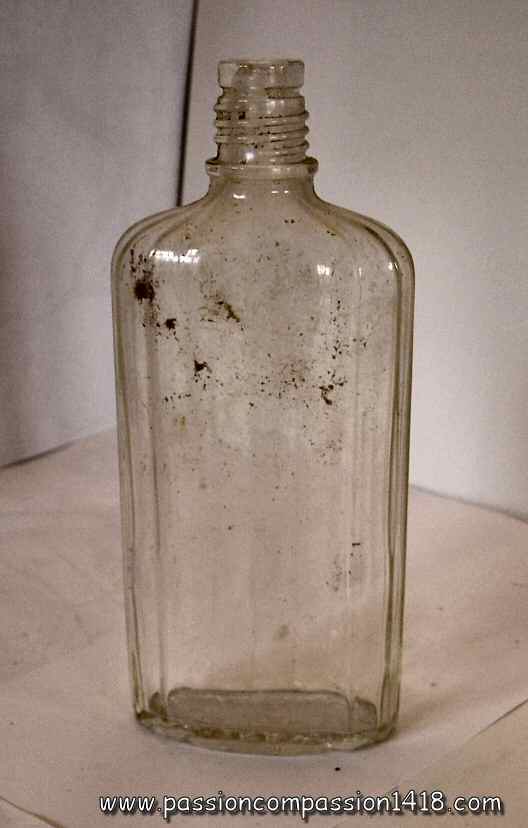 |
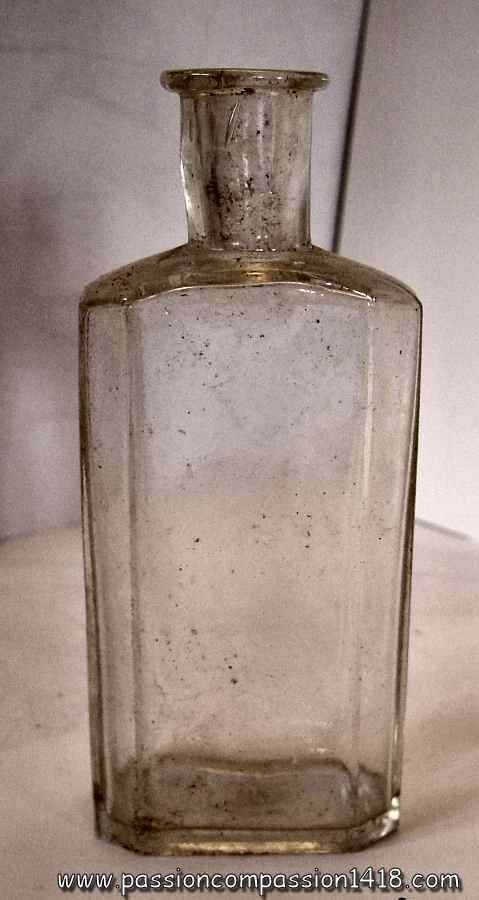 |
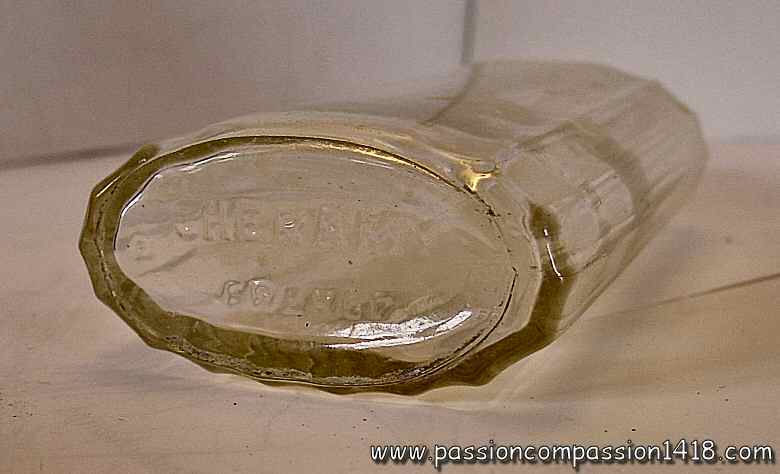 |
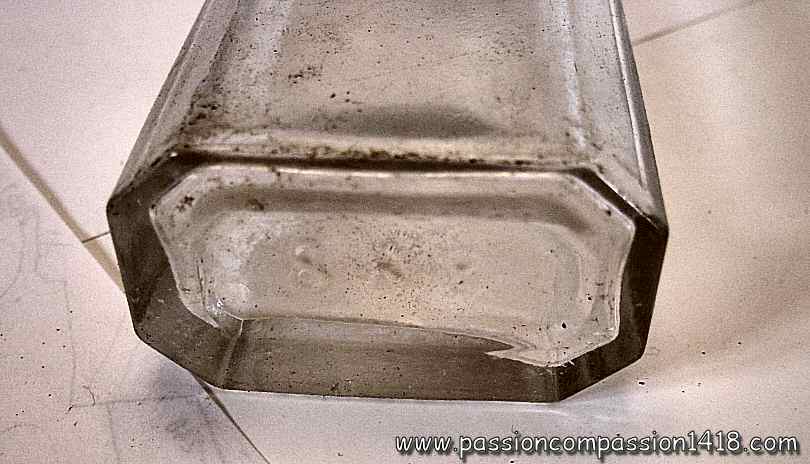 |
The fate of the wounded soldiers of WW1 is not. The more unlucky were dying for days and nights in the no man's land. A martyrdrom was beginning for the ones who had 'the luck' to fall in the friendly lines, so often ending with death... at the hospital or on they way to it. The quality of the first aids received on the frontline was often determining. In the trenches life conditions, infections and tetanus were frequent.
French acetylene lamp, designed for coal-mining, and given as additionnal lighting material to troopers. Found near Hurtebise, on the Ladies' Way. That object perhaps offered a little comforting light to some soldiers hiding underground in a heavily shelled shelter...